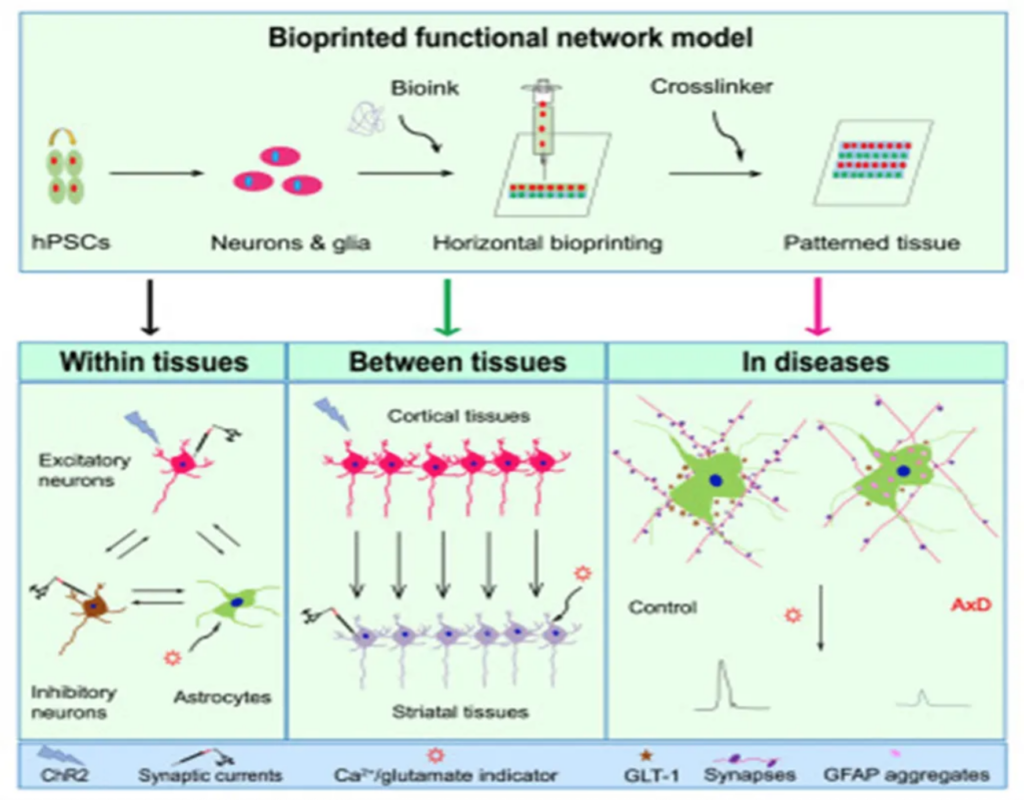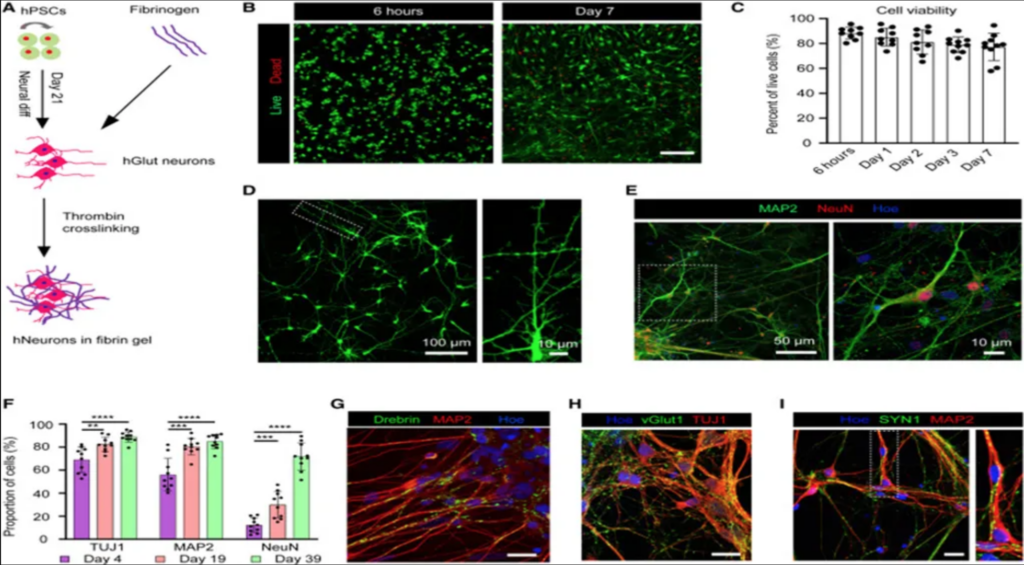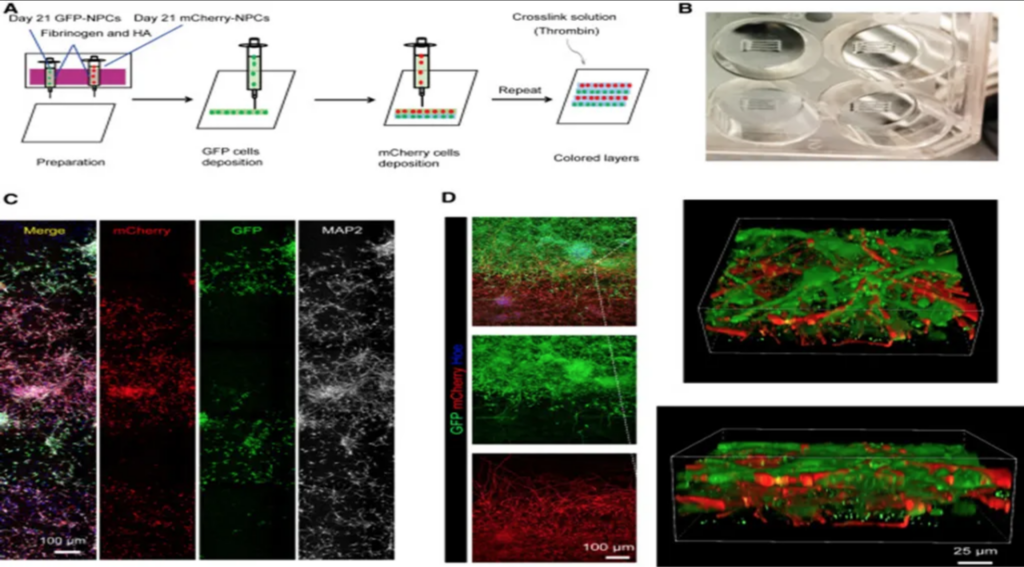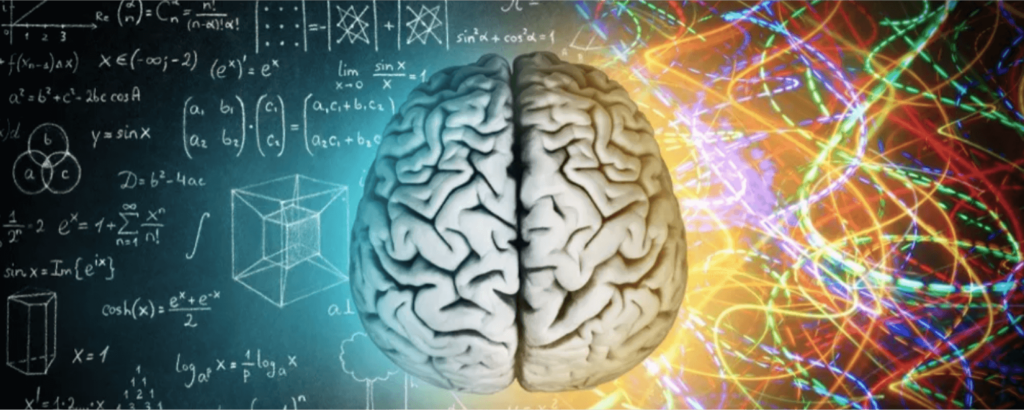Creating models of living human neural tissues for studying brain health and disease has been challenging due to the complexity of soft tissue printing. However, recent advancements in 3D bioprinting technology have brought a significant breakthrough in neuroscience. This technology enables the creation of complex human neural tissues with functional connectivity, which was impossible with traditional methods using non-biodegradable scaffolds.
One of the groundbreaking technologies that have emerged is extrusion bioprinting. This method offers a new approach to assembling neuronal and glial subtypes into 3D neural tissues with functional connectivity, significantly advancing the understanding of human neural networks under normal and pathological conditions.
The article presents a comprehensive overview of recent advancements in 3D bioprinting of human neural tissues. This innovation marks a significant milestone in neuroscience and could lead to new treatments for neurological disorders.
The Design of 3D Bioprinted Human Neural Tissues
The design of 3D bioprinted neural tissues involves meticulous considerations to ensure neural cells’ survival, maturation, and functional connectivity. Key factors such as biomaterial selection, printing strategy, and tissue dimensions play crucial roles in determining the success of the bioprinting process. Using fibrin hydrogel as the bioink provides a biocompatible scaffold for neural cell growth and differentiation. Extrusion-based bioprinting enables the precise deposition of neural cell layers, facilitating the formation of multi-layered tissues with defined cellular compositions and dimensions.

Results
1. Bioink Development:
Optimal concentrations of fibrinogen and thrombin were determined to support the survival and maturation of cortical neural progenitor cells (NPCs), culminating in developing a printable bioink incorporating fibrin gel and hyaluronic acid.

2. Tissue Structure Maintenance:
Printed neural tissues demonstrated structural integrity, with NPCs maturing into neurons and extending processes within and across layers.

3. Functional Neuronal Networks:
Glutamatergic neurons and GABAergic interneurons formed synaptic connections, exhibiting functional networks characterized by spontaneous action potentials (sAPs) and synaptic currents (EPSCs, IPSCs).
4. Neuron-Astrocyte Interactions:
The incorporation of astrocyte progenitors facilitated the formation of neuron-astrocyte networks, crucial for neurotransmitter recycling and synaptogenesis.
5. Cortical-Striatal Connectivity:
Functional connections between cortical and striatal tissue layers were established, resembling in vivo patterns, with cortical neurons stimulating calcium responses in striatal neurons.
6. Modeling Pathological Processes:
Printed tissues accurately recapitulated pathological features, such as reduced synaptic puncta density in Alexander disease (AxD) tissues compared to controls, highlighting their utility for disease modeling.
Discussion
The advancements in 3D bioprinting of human neural tissues hold immense potential for revolutionizing neuroscience research. By providing researchers with physiologically relevant models of neural tissues, this technology opens new avenues for studying neural development, function, and pathology. Moreover, the ability to model neurodegenerative diseases such as Alexander’s highlights the translational implications of 3D bioprinted neural tissues in drug discovery and personalized medicine.
Limitations
Despite its remarkable capabilities, 3D bioprinting technology still faces limitations, including the inability to support multi-layer printing and orient mature neurons. However, ongoing research efforts aim to address these challenges and further enhance the fidelity and functionality of bioprinted neural tissues.
Revolutionizing Neuroscience: Conclusion
In conclusion, 3D bioprinting represents a transformative approach to neuroscience research, offering unprecedented opportunities for studying the complexities of the human brain. By harnessing the power of bioprinting technology, researchers are poised to unravel the mysteries of neural function and dysfunction, ultimately paving the way for innovative therapeutic strategies and personalized interventions in neurological disorders.
This article underscores the importance of continued advancements in 3D bioprinting technology and its potential to shape the future of neuroscience research and clinical practice.
Reference
Yan Y, Li X, Gao Y, et al. 3D bioprinting of human neural tissues with functional connectivity. Cell Stem Cell. 2024 Feb 1;31(2):260-274.e7. DOI: https://doi.org/10.1016/j.stem.2023.12.009
About Docquity
If you need more confidence and insights to boost careers in healthcare, expanding the network to other healthcare professionals to practice peer-to-peer learning might be the answer. One way to do it is by joining a social platform for healthcare professionals, such as Docquity.
Docquity is an AI-based state-of-the-art private & secure continual learning network of verified doctors, bringing you real-time knowledge from thousands of doctors worldwide. Today, Docquity has over 400,000 doctors spread across six countries in Asia. Meet experts and trusted peers across Asia where you can safely discuss clinical cases, get up-to-date insights from webinars and research journals, and earn CME/CPD credits through certified courses from Docquity Academy. All with the ease of a mobile app available on Android & iOS platforms!






